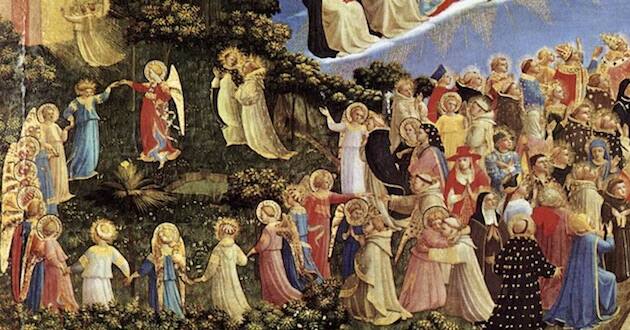Why Christianity put away its dancing shoes – only to discover them centuries later

In the PBS documentary series “The Black Church: This Is Our Story, This Is Our Song,” scholar Henry Louis Gates Jr. shows how African Americans introduced new rhythms, music and dancing to Christianity from the days of slavery to the present. African American spirituals and the ring shout, a type of religious dance, provided some enslaved people with hope and perseverance.
While the Black Church enlivened Christian worship, there is an even older story of Christian dance that I tell in my 2021 book, “Ringleaders of Redemption: How Medieval Dance Became Sacred.”
Evidence from the ninth through 15th centuries in Western Europe suggests that Europeans not only tolerated dance, but incorporated it into religious thought and practice.
Authorizing dance
The tradition of Christian dance did not happen overnight. For the first five centuries of Christianity, the church opposed dancing. According to church leaders and early theologians such as Tertullian and Saint Augustine, dancing incited idolatry, lust and damnation.
Moreover, early Christianity was more likely hostile to dancing because it reminded believers of their pagan counterparts in the Roman Empire, as Augustine’s book “The City of God” made clear. For example, Augustine wrote: “the worshippers and admirers of these (pagan) gods delight in imitating their scandalous iniquities… . Let there be heard everywhere the rustling of dancers, the loud, immodest laughter of the theater; let a succession of the most cruel and the most voluptuous pleasures maintain a perpetual excitement.”

Indeed, dance was an important part of cultural and civic life in Greco-Roman antiquity. Christians, however, needed to distinguish themselves from pagans and set an example of pious behavior.
Much to the annoyance of medieval clergy, some Christians would even skip Mass for the theater or gladiatorial games, which formed a larger part of ancient dance and entertainment culture.
Despite centuries of dance prohibitions that came from church councils, ancient and medieval Christians would not stop dancing. Ritual manuals of the 13th century and beyond reveal how church authorities turned dance to the service of Christendom.
Within the spaces of churches, cathedrals and shrines, dance could help generate collective worship. For example, following healing miracles that saints supposedly enacted, community members would erupt into song and dance. From the church’s point of view, such pious performances could actually enhance orthodoxy. In other words, dance could work in the service of conversion and rituals.
By the 12th century, Christian theologians would look to the Bible to obtain evidence that dance was permitted. For example, in Exodus 15:20, Miriam, the sister of Moses, dances with other Israelite women to praise God. For medieval Christians, Miriam’s dancing signified Christian worship and rituals.
Dance of King David
Additional biblical evidence for sacred dance came from King David, an Old Testament monarch. The Bible contains a scene in which David humbles himself before his subjects by dancing for the Lord.
According to the Latin Bible, David danced while he was naked. Medieval commentators interpreted this dance as a Christian expression of humility.
In a 13th-century manuscript called the “Bible Moralisée,” or The Moralized Bible, the dance of David, according to the author, “signifies Jesus Christ who celebrated Holy Church and celebrated the poor and the simple and showed great humility.”
Moreover, as I discovered in my archival research, an image from a 14th-century biblical picture book of sorts, juxtaposes the dance of David with the Crucifixion of Christ.
Although a Jewish figure from the Old Testament, medieval Christians began to see David and his dance as prophesying the “Passion of Christ.” Because David danced naked – in a way unbefitting of a king – they believed, it had a resemblance to the humiliation of one who had to suffer and die.
Sanctifying dancing
Since at least the ninth century, dancing became integrated into Christian devotion. During pilgrimages to the shrine of Saint Faith, a child martyr from the third century who had a strong following in medieval France, Christians would break into dancing and singing.
And 13th-century friar Francis of Assisi was said to dance in a dramatic fashion while preaching. For Francis, who was later canonized as a saint, it animated his image.
Actual dances began to be performed in churches and cathedrals during public worship. Ritual manuals from the 13th century testify to a variety of dances that Christians and clergy performed during sacred days, especially during Christmas and Easter.
Video: Public line dances are now organized on Easter morning in Europe:
From the 14th through 16th centuries at the Auxerre Cathedral in France, religious men danced and played a ball game on the cathedral’s labyrinth every Easter Monday. They sang a sacred hymn about Christ’s triumph over death, as they danced.
Moreover, dance appeared in the literary arts as well. Dante Alighieri’s “Divine Comedy,” composed in the 14th century, contains exquisite poetic renderings of dance in purgatory and paradise.
Medieval women enacted sacred dance too. Sister-books, or documents produced in German nunneries during the Middle Ages, provide textual evidence for the existence of dancing at convents. For example, one German sister-book tells how a nun named Irmendraut began to dance in a spiritual manner after she recovered from a long illness: “this sister became so deeply enraptured that she jumped off the pillow where they had laid her and into the middle of their circle with quick straight legs. And then, in the presence of the community, she danced so lovingly in God’s praise that all who saw and heard it felt longing and anguish for the joy that was so unknown to them.”
For medieval women, dance allowed them proximity to divine presence during a time when no more women were being ordained into important ministerial and leadership roles. According to religion scholar Gary Macy, the church stopped ordaining women around the 13th century. As Macy writes, “by the 13th century, it was assumed in both law and theology that women could not be ordained and indeed had never been ordained.”
Christianity and dancing lost in history
By the 16th century, however, the cultural landscape of Christian dance changed dramatically. There were many reasons.
17th Century Shakers modeled dancing on period styles:
The Protestant Reformation and Catholic Counter-Reformation began to critique dancing and declare it idolatrous. Moreover, starting in the 14th century, women were suspected of, and persecuted for, practicing witchcraft. During the European witch trials, witches were accused of dancing with the devil during a satanic ritual known as the Witches’ Sabbath.
By the 17th Century, Christian dance was largely lost to western history. Over time, enslaved Africans, with their traditions of sacred song and movement, would put the dance back into Christianity.
Today, dancing as part of worship is central to the faith of hundreds of millions of believers around the world. Christianity, it seems, is rediscovering its dancing shoes.
– Visiting Scholar, School of Religion, University of Southern California







